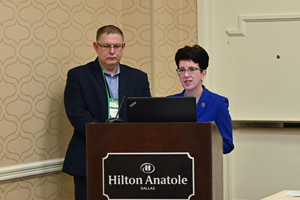
At the 2019 AACRAO SEM Conference in
November, Randall Langston, Vice President for Enrollment Management, and Carolyn A. Kapinus, Interim Provost and Professor of Sociology, at Texas Women’s University (TWU), shared how their enrollment management and academic affairs departments
worked together on a strategy to re-envision graduate enrollment management (GEM).
In “Integrating Traditional Enrollment Management Practices into a Robust and Successful Graduate Enrollment Management Strategy for Recruitment,” the presenters shared how they established a revenue-based approach to GEM. According
to Langston and Kapinus, their previous headcount-based enrollment assessment—which didn’t consider the issue of funding and revenue—hindered the ability to make strategic decisions.
In their new approach, TWU aligned their institutional plan with state priorities that included Texas’s “60x30” goals (to increase the percentage of Texans ages 25-34 with a certificate or degree from 43.5 percent to 60 percent
by 2030; to increase completion rates and marketable skills, and to decrease student debt) and formula funding (designed to award funding on number of students enrolled and academic major studying at UG or GR level).
TWU’s Academic Affairs Strategic Plan included:
- Re-visioning TWU’s strategy for graduate education to best serve students in both research and professional programs;
- Identifying which programs should be offered to meet student or graduate demand, assessing viability of current programs, and developing the support infrastructure necessary to attract and retain strong graduate students; and
- B
etter aligning TWU graduate programs with student demand and market demand for graduates.
The results included new student increases of 12 percent in the summer 2018, 13 percent in fall 2018, and 40.4 percent in spring 2019.
Langston and Kapinus attribute their success to purposeful alignment with formula funding models; collaborative communication and trust between the division of enrollment management and the graduate school and academic affairs; looking “outside
the box” and taking measured risks; and direct incentivizing (providing scholarships) of students based upon leveraging revenue to discounting.